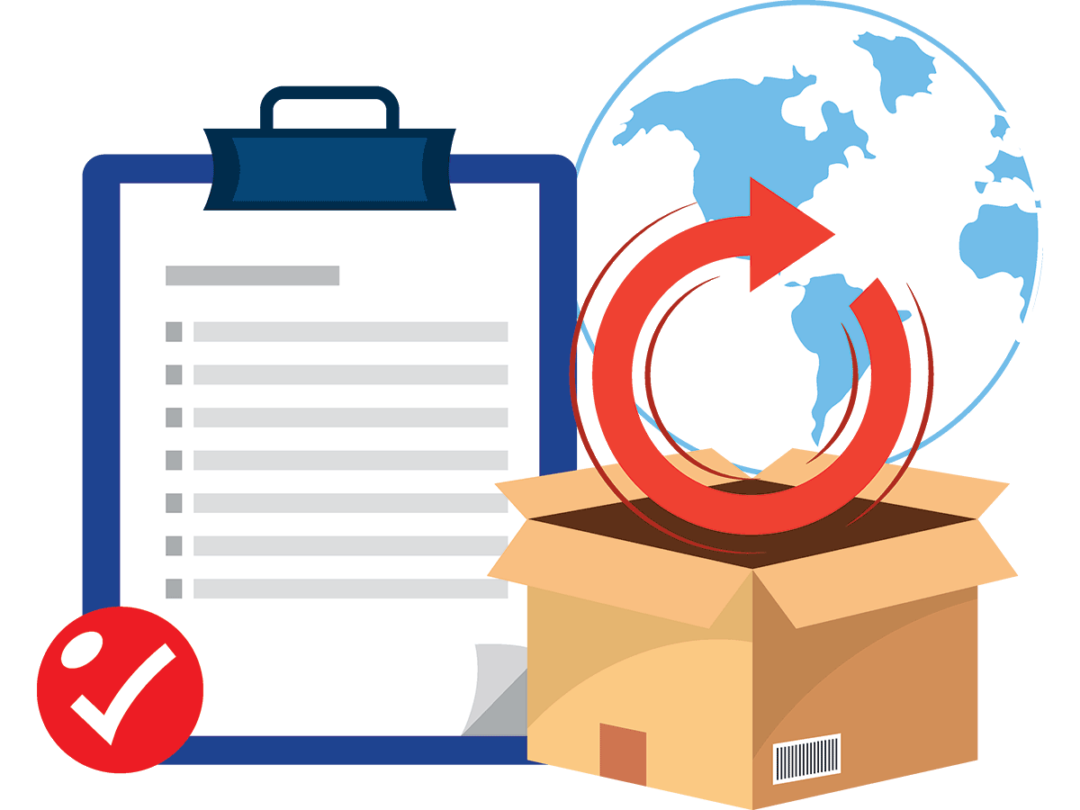Catching the boomerang
Consumers love a streamlined product returns experience. That’s driving retailers to automate the back-end processes that make it all work.

Retailers have enjoyed a huge boost in e-commerce sales to consumers sheltering at home during the pandemic. But that success has come with strings attached. Like a boomerang, a large portion of the goods they ship to buyers’ homes come hurtling back in the form of returns.
Although it varies by the type of goods sold, an estimated one out of every three items bought online is returned, a rate that is three to five times higher than with brick-and-mortar sales. And traditionally, sorting returns has been an expensive, laborious process, relying on workers to manually inspect, repair, and repackage items before they can be shipped back to stores or returned to inventory. That time-intensive handling can seriously erode profit margins, leading many retailers to let returns pile up in a corner of the DC or even send them to a landfill.
But in recent months, companies have been cutting their losses through automation and digitalization. If that sounds familiar, it’s because those are some of the same strategies they’ve deployed to streamline their forward fulfillment operations in an effort to keep pace with industry leader Amazon.com.
Those tactics have allowed many retailers to survive the pandemic-fueled surge in e-commerce returns and even begin using their “hassle-free returns” policies as a competitive lever to keep fickle customers coming back. However, while consumers care deeply about the “front end” of the returns process—free shipping and quick refunds—warehouses are still saddled with expensive “back end” procedures like sorting, inspecting, and refurbishing goods.
A DELICATE BALANCE
Striking a balance between those competing demands is key to running a finely tuned returns operation, says Mike Venditti, vice president for the Western region at Port Logistics Group, a California-based third-party logistics service provider (3PL) that offers e-commerce fulfillment as well as wholesale and retail distribution services.
“It used to be that returns were an afterthought, tucked away in a corner of the DC until people could just kind of muscle through it. But now you have to look at workflow, optimization, and headcount; labor is huge,” Venditti says. “If you’re not prepared to handle this, it will eat you up. Not only in inconvenience to the customer, but in profitability. It will hurt you very badly.”
As for what makes the process so costly, it’s largely the tension between granting shoppers a quick credit for returned goods—to encourage them to spend that credit with the same retailer—and the complex process of refurbishing those goods for resale.
“You can’t just package it up and put it back on the shelf; it’s a full-blown quality assurance process,” Venditti says. “[For apparel,] you have to open up [the package], inspect the item, and then clean, steam, lint-roll, and repackage it. No retailer wants to get something shipped back to them that looks like someone wore it mowing the lawn.”
THE COST OF QUICK TURNAROUND
To accelerate the process of handling returns, many facilities are turning to automation. For example, some DCs are employing autonomous mobile robots (AMRs) to ferry returned goods to storage locations in far corners of the DC, eliminating travel time for human workers.
Other companies are looking to digitization, applying technology such as data analytics and machine learning to squeeze inefficiency out of the process and maximize the revenue they capture at resale. The movement has led to the emergence of specialized startups like Optoro, Narvar, FloorFound, ReverseLogix, and Happy Returns that help retailers and 3PLs with returns disposition. All founded since 2010, these tech vendors use various strategies to accelerate the process of getting returned goods back into the marketplace at the lowest cost, building efficient networks to handle the goods and applying algorithms to eliminate unnecessary steps and improve inventory visibility throughout the goods’ journey. Other platforms like the online liquidation sites B-Stock and Overstock.com support business-to-business (B2B) auctions or virtual consumer marketplaces where the returns can swiftly be resold.
Some 3PLs are combining both approaches, investing in automated material handling equipment as well as specialized software for use in dedicated returns-processing facilities. That is the approach taken by transportation and logistics giant XPO Logistics Inc., which says its strategy allows retailers and manufacturers to profit from the returns revolution, not just survive it.
“We create dedicated hubs—often with hundreds, or even thousands, of employees—that focus entirely on returns. These hubs optimize value for customers by using advanced automation to sort, repackage, and get goods back into the supply chain 10 to 15 times faster than before, minimizing inventory losses,” says Malcolm Wilson, CEO of XPO Europe, who was recently named to lead XPO’s planned contract logistics spinoff.
“Consumers are purchasing more, and different, items online, which means they’re returning more than ever, too. It’s especially evident in apparel now that home is the new fitting room,” Wilson said in an email. “We’ve developed predictive analytics that can forecast the future rate of return for product and adjust for seasonality to ensure our customers are prepared for the next phase of the e-commerce revolution.”
Handling returns at a dedicated hub or regional DC also saves on transportation costs, says Rob Zomok, president of global operations and client experience at Inmar Intelligence, an information technology and services company in North Carolina. By limiting shipments of returns to nearby geographic zones, a retailer can avoid the unnecessary expense of shipping an item returned by a customer in Massachusetts back to a store or processing site in California, only to discover it’s not in saleable condition.
Retailers can also control costs by using specialized returns software to access an expanded range of options for disposing of those goods, Zomok adds. Such technology can help users decide whether to send returned inventory back into stock, return it to the wholesaler, donate it, recycle it, dispose of it through liquidation sales, or—as a last resort—consign it to a landfill.
MORE, BETTER OPTIONS
Despite all the associated challenges, retailers are likely to keep rolling out new “boutique” returns options—largely because they keep shoppers coming back. A recent survey by voice solutions specialist Voxware found that 97% of consumers “agree or strongly agree” that the way retailers handle returns influences whether they will purchase from that retailer again in the future.
So in an age when the customer experience, or “CX,” is king, returns are a new battlefield for customer loyalty. That’s led many retailers to relax their returns policies, whether it’s by extending their returns windows or by giving buyers more options for returning items purchased online. For example, rather than taking the package to the nearest post office, consumers can now return unwanted items to a store, drop them off curbside at a retail outlet, or use alternative dropoff points like shopping mall service desks or UPS Store and FedEx Office outlets. Some retailers will even dispatch carriers to customers’ homes to pick up the returns.
But services like that are expensive to provide, so retailers in 2021 are watching their competitors closely to see who blinks first. The coming year will reveal which practices endure after the pandemic subsides and shoppers once again venture into physical stores.
Editor's note: This article was revised on April 16 to change the description of Inmar Intelligence from “a retail consulting and technology services company” to "an information technology and services company."
Related Articles

Copyright ©2024. All Rights ReservedDesign, CMS, Hosting & Web Development :: ePublishing